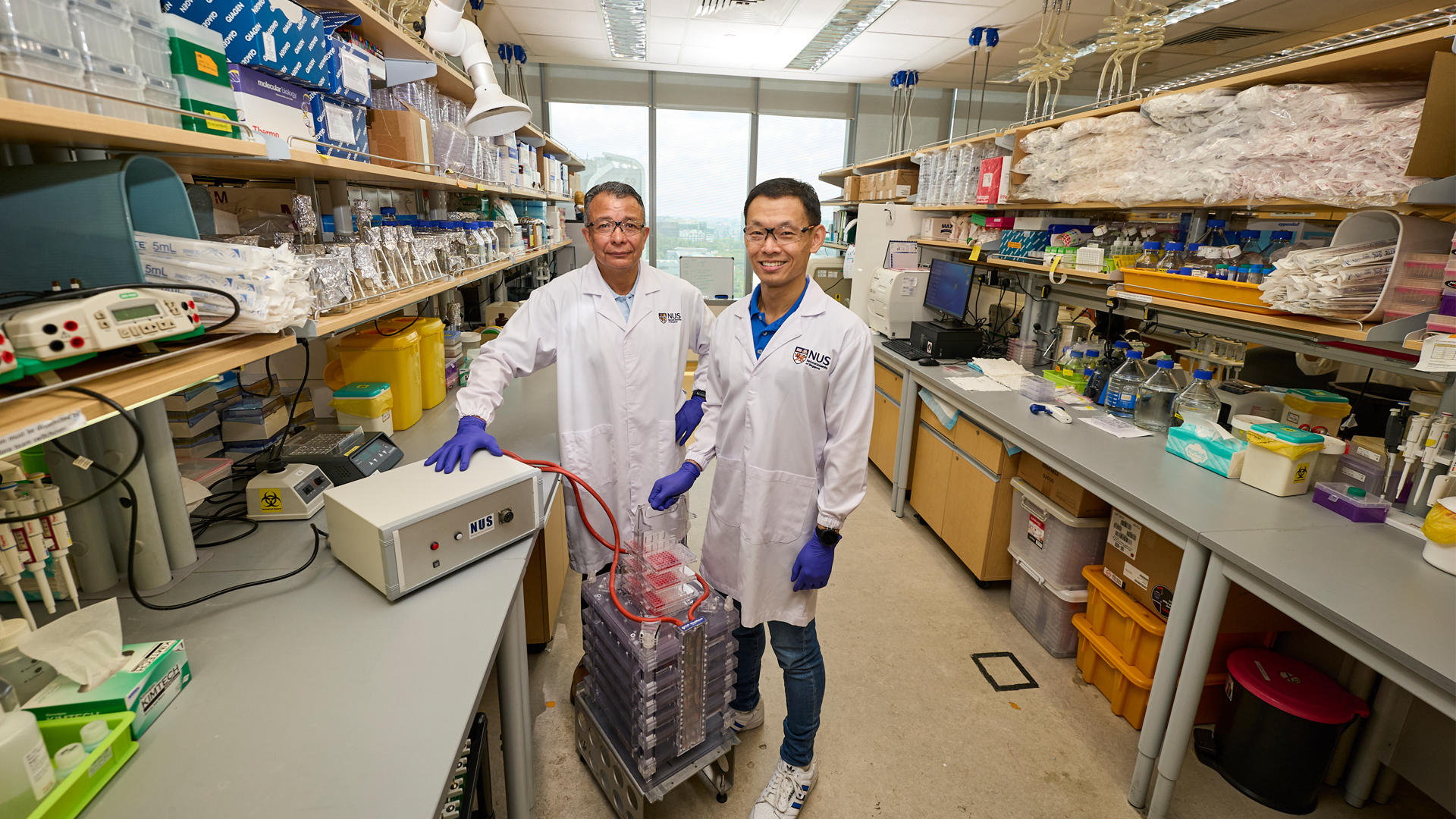By zapping stem cells with magnets, scientists in Singapore have developed a way to grow lab-grown meat that eliminates the need for fetal bovine serum (FBS) — an expensive, controversial substance holding back the sustainable meat industry.
The challenge: Global meat consumption has more than doubled since 1990 — humans now eat 350 million tons of meat every year, and thanks to a growing population and rising incomes, we could be consuming 550 million tons annually by 2050.
This hunger for meat creates a problem for the planet, as livestock are responsible for 14.5% of global greenhouse gas emissions. The process of raising and slaughtering animals, especially in factory farm settings, is also arguably unethical.
Many carnivores are unwilling to switch to a vegetarian diet, though, because they like the taste of meat and even the best plant-based meat alternatives aren’t a perfect substitute for the meat they’re used to.
Meat matters: Lab-grown meat is a potential solution to this problem.
Because it’s grown from animal cells, it’s molecularly identical to the kind of meat that comes from animals. That means it can perfectly match the flavor of “real” meat (though matching the texture is a work in progress).
The fetal bovine serum used to make most lab-grown meat is both expensive and controversial.
However, lab-grown meat is still very expensive and does not eliminate animal suffering, due to the use of FBS, a liquid taken from the blood of unborn calves after their mothers are killed at slaughterhouses.
During the production of most lab-grown meat, FBS is mixed with muscle cells taken from living animals to help the cells grow and multiply. It’s an important step in the process, but FBS is expensive, and the source and extraction process is highly controversial.
Magnet method: By exposing stem cells found in the skeletal muscle and bone marrow tissue of animals to magnetic pulses, National University of Singapore (NUS) researchers were able to get the cells to release molecules (called “secretomes”) that cells need to develop into tissues.
“The muscle knows how to produce what it needs to grow and develop — it simply needs a little bit of encouragement when it is outside its owner.”
Alfredo Franco-Obregón
According to research team leader Alfredo Franco-Obregón, these molecules could be safely and cheaply harvested in the lab using this process and then used in place of FBS.
“[The] stem cells will act as a sustainable and green bioreactor to produce the nutrients-rich secretomes for growing cell-based meat at scale for consumption,” Franco-Obregón explained.
“The muscle knows how to produce what it needs to grow and develop — it simply needs a little bit of encouragement when it is outside its owner,” he continued. “This is what our magnetic fields can provide.”

The researchers have filed a patent for their technology and are now looking for partners to help them commercialize it.
The big picture: Lab-grown meat will almost certainly never be an affordable alternative to real meat with FBS as part of the production process — a liter of the substance can cost $300 to $400, and nearly 3 liters can be needed to make a pound of muscle tissue.
That’s made eliminating the need for FBS a major goal of the clean meat industry.
In addition to the NUS team’s magnet-based method, we’re also seeing groups working with plant-based alternative serums, genetic engineering, and more to cultivate meat without FBS — and any one of these could be the breakthrough that puts affordable, cruelty-free clean meat on the table.
We’d love to hear from you! If you have a comment about this article or if you have a tip for a future Freethink story, please email us at [email protected].






